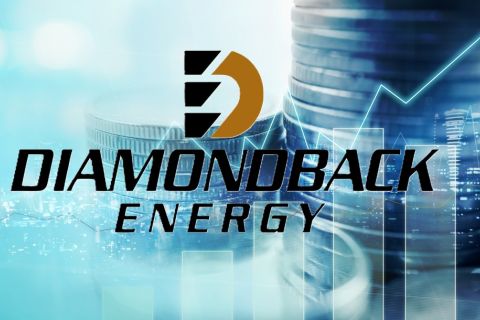The drive for hydrogen is speeding up with hubs in the making, the Inflation Reduction Act ushering in production tax credits and partnerships forming among industry players.
Emitting only water vapor and warm air once produced to generate electricity, hydrogen is seen as key to lowering emissions. However, it remains one of the most expensive forms of energy. Getting costs down—along with carbon intensity, which varies based on production method—will factor in its future.
Today, nearly all of the world’s 90 Mt/year of hydrogen produced is gray, which is created from natural gas via steam methane reforming without carbon capture and storage (CCS). The goal of companies across the world is to increase use and production of cleaner forms of hydrogen like green and blue.
Blue hydrogen, some believe, will have a bigger role in the shorter term. However, high prices for natural gas and costs for CCS are impacting economics today.
Green hydrogen, produced by splitting water into hydrogen and oxygen using electricity from renewable sources, is a zero-emission but expensive source.
Sverre Alvik, director of energy transition outlook at DNV, recently shared insight on blue and green hydrogen with Hart Energy. He served as project director for DNV’s Hydrogen Forecast to 2050 report released earlier this summer. Although hydrogen is behind on its goal to reach 15% of the global energy mix, costs are improving.
RELATED
Hydrogen Energy Outlook: Bridging the Gap from 5% to 15%
Green hydrogen will reach cost parity with blue hydrogen within the next decade, becoming the cheapest form of production in most regions by 2050, according to the report. By this time, grid-based electrolysis costs would have fallen to average about US$1.50/kg, if forecasts hold true. DNV also forecasts blue hydrogen costs will drop from US$2.5 in 2030 to US$2.2/kg in 2050. Costs are already US$2/kg in regions, like the U.S., with access to cheap gas, it said.

Hart Energy: How do you see the Inflation Reduction Act changing the future of hydrogen in the U.S.?
Sverre Alvik: It is encouraging to see that policymakers have a grasp of the importance of hydrogen. Like all policy, it is the implementation that will be important and in the context of the Paris targets the speed of the roll out is also vital. In terms of hydrogen, the U.S. is playing catch-up to Europe, and it is important to stress that we need a global effort to increase hydrogen production.
HE: Given outlooks that say green hydrogen costs will be lower than blue hydrogen in the future, is it worth it for companies to pursue blue hydrogen projects now? Why or why not?
SA: Yes, DNV is clear that it is not green or blue hydrogen, it is green and blue. From a technology perspective, both are viable solutions. From a financial perspective, both of them are sound (for the relevant applications), and there are clearly geographical differences depending on e.g. costs of natural gas. And from a climate point of view, we need both.
HE: For which applications is hydrogen best suited?
SA: Hydrogen is relatively expensive and inefficient and should therefore be used in sectors that cannot use direct electrification. DNV sees high heat manufacturing as the most promising sector. In heavy transport, hydrogen has an important role to play, but mostly not in pure form, but as a basis for hydrogen derivates, such as ammonia, methanol and aviation fuels. And then hydrogen has a much smaller role to play in areas such as buildings heating and power production.
HE: What is the current natural gas demand for blue hydrogen in the U.S.?
SA: ‘Market’ is a word with many meanings, but if we look at is as the overall use of blue hydrogen, we could say that at the moment, the market is negligible, and the production of blue hydrogen in U.S. is negligible.
HE: How is that expected to change by 2030? 2050?
SA: By 2030, we expect the North American demand (mostly U.S., but including Canada) to be 1.7 Mt, then it grows to about 7 Mt in 2040, before starting to decline again in the late 2040s as green hydrogen becomes more competitive and reach 3 Mt in 2050.
HE: Is blue hydrogen production economic today, considering natural gas prices and CCS costs?
SA: Blue hydrogen is expensive today, and lower natural gas prices is the main driver for getting the costs down. Competitiveness must always be measured against the competitors, and all forms of clean hydrogen are still expensive. We expect blue hydrogen to have relatively good competitiveness in the North American market for the next couple of decades. That does not mean it is cheap, but competitive with other clean alternatives in key sectors.
HE: Are U.S. natural gas producers positioning themselves to meet demand?
SA: At the moment, NG [natural gas] producers are first and foremost producing for NG demand, not blue hydrogen demand. And while blue hydrogen demand will grow, it will always represent only a relatively small share (<5%) of overall natural gas demand in North America.
Recommended Reading
Hess Corp. Boosts Bakken Output, Drilling Ahead of Chevron Merger
2024-01-31 - Hess Corp. increased its drilling activity and output from the Bakken play of North Dakota during the fourth quarter, the E&P reported in its latest earnings.
Petrie Partners: A Small Wonder
2024-02-01 - Petrie Partners may not be the biggest or flashiest investment bank on the block, but after over two decades, its executives have been around the block more than most.
CEO: Coterra ‘Deeply Curious’ on M&A Amid E&P Consolidation Wave
2024-02-26 - Coterra Energy has yet to get in on the large-scale M&A wave sweeping across the Lower 48—but CEO Tom Jorden said Coterra is keeping an eye on acquisition opportunities.
CEO: Magnolia Hunting Giddings Bolt-ons that ‘Pack a Punch’ in ‘24
2024-02-16 - Magnolia Oil & Gas plans to boost production volumes in the single digits this year, with the majority of the growth coming from the Giddings Field.
Endeavor Integration Brings Capital Efficiency, Durability to Diamondback
2024-02-22 - The combined Diamondback-Endeavor deal is expected to realize $3 billion in synergies and have 12 years of sub-$40/bbl breakeven inventory.






